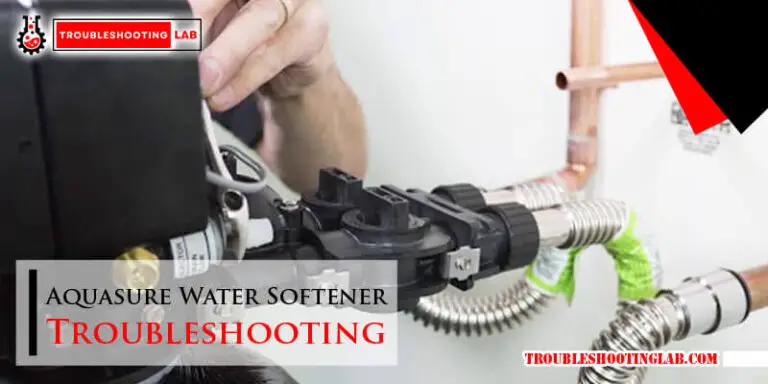Generac Generator Troubleshooting: Quick Fix Guide
To troubleshoot a Generac generator, start by checking the battery, fuses, and voltage. Ensure coolant levels are adequate.
Battery failure is a common issue in Generac generators due to age or damage, necessitating replacement every two years. Low coolant levels can trigger a “no start” state. Other reasons for a Generac generator not starting include low oil, empty fuel tank, choke malfunction, clogged fuel valve, carburetor issues, faulty spark plug, dead battery, and dirty air filters.
Regular maintenance and timely replacements can prevent these common problems, ensuring your generator functions smoothly when needed. Consulting a professional electrician for troubleshooting and repairs is advisable for complex issues.
Common Issues With Generac Generators
Generac generator troubleshooting often reveals common issues like battery failure, low coolant levels, and faulty switches. Regular maintenance, timely battery replacements, and monitoring coolant levels can prevent these problems. Proper troubleshooting and maintenance ensure your Generac generator runs smoothly when you need it most.
Failure To Start
One of the most common issues with Generac generators is the failure to start. This can be caused by various factors such as low oil level, empty fuel tank, or a malfunctioning choke. Additionally, a clogged fuel valve, carburetor, or dirty air filters can also prevent the generator from starting.
Battery Problems
Another prevalent issue with Generac generators is related to battery problems. The generator’s battery plays a crucial role in starting the unit, and if it is old or damaged, it can result in the generator not kicking on. Regularly checking and replacing the battery every two years is essential to ensure the smooth operation of the generator.

Credit: www.chappleelectric.com
Starting Your Generator Manually
To manually start your Generac generator, ensure the fuel valve is open, then switch the ignition to the start position. Once it’s running, let it warm up before connecting any loads to avoid damage. If it fails to start, check the fuel level, battery, and air filter, and consider professional troubleshooting if issues persist.
Step-by-step Guide:
If your Generac generator fails to start automatically, you may need to start it manually. Here is a step-by-step guide on how to manually start your generator:- Turn off all the circuit breakers in the transfer switch to avoid any electrical load.
- Locate the generator’s main circuit breaker and turn it off.
- Find the generator’s control panel and turn the fuel valve on.
- Flip the generator’s engine switch to the “On” position.
- Press and hold the “Start” button until the generator starts.
- Once the generator starts, flip the main circuit breaker on.
- Turn on the individual circuit breakers in the transfer switch one at a time.
Troubleshooting Tips:
If your Generac generator still won’t start after following the step-by-step guide, here are some troubleshooting tips to try:- Check the fuel level and add more fuel if necessary.
- Check the oil level and add more oil if necessary.
- Inspect the spark plug and replace it if necessary.
- Check the air filter and replace it if necessary.
- Check the battery and replace it if necessary.
Maintaining Optimal Performance
Regular maintenance is crucial for ensuring the optimal performance of your Generac generator. By conducting routine checks and addressing potential issues promptly, you can prevent unexpected breakdowns and prolong the lifespan of your generator. Here are some essential maintenance tasks to help keep your Generac generator running smoothly.
Battery Maintenance
Regularly inspect and clean the battery terminals to ensure a secure connection. Loose or corroded terminals can impede the flow of power and affect the starting capability of the generator. Check the electrolyte levels in the battery and top it up with distilled water if necessary. Additionally, monitor the battery voltage and replace the battery every two years to prevent unexpected failures.
Coolant Level Checks
Monitor the coolant level in the generator’s radiator and top it up as needed to prevent overheating. Low coolant levels can trigger a sensor, causing the generator to enter a “no start” state. Regularly inspect the coolant for signs of contamination or degradation, and flush the system if necessary. Proper coolant maintenance is crucial for preventing engine damage and ensuring reliable operation.

Credit: m.youtube.com
Troubleshooting No-start Situations
When your Generac generator fails to start, it can be a frustrating experience, especially during power outages. By following the troubleshooting steps for no-start situations, you can quickly identify and resolve the issue, ensuring your generator is ready to provide reliable backup power when needed.
Oil Level Inspection
One of the first steps in troubleshooting a no-start situation is to inspect the oil level in your Generac generator. Low oil levels can trigger a safety feature that prevents the generator from starting. To check the oil level:
- Locate the oil dipstick on the generator.
- Remove the dipstick and wipe it clean.
- Reinsert the dipstick fully, then remove it to check the oil level.
- If the oil level is low, add the appropriate oil for your generator.
Fuel Supply Verification
Another common reason for a Generac generator not starting is an issue with the fuel supply. To verify the fuel supply, follow these steps:
- Check the fuel tank to ensure an adequate supply of fuel.
- If the fuel level is low, refill the tank with the recommended fuel type.
- Inspect the fuel lines for any signs of damage or blockages.
- If necessary, clean or replace the fuel filter to ensure proper fuel flow.
Dealing With Electrical Issues
When it comes to troubleshooting your Generac generator’s electrical issues, it’s crucial to address the problems promptly to ensure the smooth operation of your unit. Here are some common electrical issues and their solutions.
Choke And Carburetor Solutions
In case of a Generac generator not starting, the choke and carburetor could be the culprits. Inspect the choke and carburetor for any blockages or malfunctions. Clean the carburetor and ensure the choke is functioning properly. If needed, adjust the choke settings according to the manufacturer’s instructions to optimize fuel and air mixture for efficient starting.
Spark Plug Examination
Regularly examine the spark plugs of your Generac generator to ensure they are clean and functioning correctly. Remove the spark plugs and inspect them for signs of wear or damage. If necessary, clean or replace the spark plugs to maintain the optimal spark for ignition.
Addressing Alarm And Sensor Faults
Generac generators are equipped with various alarms and sensors to ensure smooth and safe operation. Addressing alarm and sensor faults is crucial for maintaining the reliability of your generator. When these alarms and sensors indicate issues, it’s essential to troubleshoot and resolve them promptly to prevent potential disruptions to power supply.
Clearing Alarms
When your Generac generator displays an alarm, it’s important to address it promptly to ensure the proper functioning of the system. The following steps can help in clearing alarms:
- Refer to the generator’s manual to identify the specific alarm code and its meaning.
- Inspect the generator for any visible issues or malfunctions indicated by the alarm.
- Address the underlying cause of the alarm, which may involve checking fuel levels, oil levels, battery condition, and other critical components.
- Once the underlying issue is resolved, reset the alarm using the generator’s control panel or reset button.
- Monitor the generator for any recurring alarms to ensure the issue has been successfully resolved.
Sensor Testing
Regular testing of sensors is vital to ensure that the generator is operating optimally and to identify any potential faults before they escalate. Here are some steps for sensor testing:
- Consult the generator’s manual to locate the sensors and understand their functions.
- Use a multimeter or appropriate testing equipment to check the sensors for accurate readings.
- Test the functionality of sensors related to oil pressure, coolant levels, battery condition, and other critical parameters.
- Compare the sensor readings with the specified values in the manual to ensure they are within the acceptable range.
- If any sensors are found to be faulty or providing inaccurate readings, consider replacing them to maintain the reliability of the generator.
By addressing alarm and sensor faults through proper troubleshooting and testing, you can ensure the continued efficiency and functionality of your Generac generator.
Mechanical Failures And Fixes
Troubleshoot Generac generator issues efficiently with these fixes: Check battery health every two years, maintain coolant levels, and replace old batteries promptly. Avoid common problems like low oil, empty fuel tank, and dirty filters to ensure smooth generator operation.
Mechanical Failures and Fixes are common issues faced by Generac generator users. One of the most common mechanical failures is a dirty air filter which can cause the generator to fail to start or run poorly. To prevent this, regular air filter maintenance is required. Another common mechanical failure is a fuel regulator that is out of adjustment. If the fuel regulator is not adjusted correctly, the generator may run poorly or not start at all. In this case, fuel regulator adjustments are necessary. Let’s take a closer look at each of these mechanical failures and their corresponding fixes.Air Filter Maintenance
Regular air filter maintenance is crucial to the proper functioning of your Generac generator. Dirty air filters can cause a restriction in airflow, which can lead to poor engine performance or even engine failure. To prevent this from happening, follow these simple steps for air filter maintenance:- Turn off the generator and disconnect the spark plug wire to prevent accidental starting.
- Remove the air filter cover and take out the air filter.
- Clean the air filter by tapping it gently on a flat surface to remove any loose debris. If the air filter is heavily soiled, it may need to be replaced.
- Reinstall the air filter and air filter cover, making sure it is properly seated and secured.
- Reconnect the spark plug wire and start the generator to ensure proper operation.
Fuel Regulator Adjustments
Another common mechanical failure is a fuel regulator that is out of adjustment. If the fuel regulator is not adjusted correctly, the generator may run poorly or not start at all. To adjust the fuel regulator, follow these steps:- Locate the fuel regulator on your Generac generator.
- Turn the generator on and let it run for a few minutes to warm up.
- Using a screwdriver, turn the adjustment screw on the fuel regulator until the engine runs smoothly.
- If the engine still runs poorly, the fuel regulator may need to be replaced.
Preventative Measures And Tips
When it comes to ensuring your Generac generator runs smoothly, taking preventative measures and following tips is essential. By incorporating routine checks and proper storage practices, you can avoid common issues and maintain the longevity of your generator.
Routine Checks
Regularly checking your Generac generator is crucial to prevent unexpected failures. Here are some routine checks to keep in mind:
- Check the battery: Ensure the battery is in good condition and replace it every two years.
- Monitor coolant levels: Low coolant levels can trigger a “no start” state, so check and refill coolant as needed.
- Inspect for leaks: Look for any signs of leakage that could indicate a potential issue.
Storage Best Practices
Proper storage of your Generac generator is key to its performance. Follow these best practices for storing your generator:
- Keep it dry: Store the generator in a dry location to prevent moisture damage.
- Use a cover: Protect the generator from dust and debris by using a cover when not in use.
- Run it regularly: Start the generator periodically to keep it in good working condition.
Credit: support.generac.com
Frequently Asked Questions
What Is The Most Common Problem With Generac Generators?
The most common problem with Generac generators is battery failure due to old or damaged batteries. It’s crucial to replace generator batteries every two years to avoid starting issues. Low coolant levels can also trigger a “no start” state. Regular maintenance is key.
How Do I Restart My Generac Generator?
To restart your Generac generator, follow these steps: Check oil and fuel levels. Ensure air filters are clean. Restart according to manufacturer’s manual.
What Is The Common Problem Of Generator?
The most common problem with generators is battery failure due to age or damage. It’s crucial to replace generator batteries every two years to avoid start-up issues. Low coolant levels can also trigger a sensor, preventing the generator from starting.
Why Is My Generac Generator Not Kicking On?
Generac generator may not kick on due to low oil, empty fuel tank, choke or fuel valve issues, clogged carburetor, faulty spark plug, dead battery, or dirty air filters. Regular maintenance can prevent these issues.
Conclusion
Troubleshooting Generac generators can be a straightforward process with the right knowledge and tools. By addressing common issues such as battery failure, low coolant levels, and fuel-related problems, you can ensure that your generator is ready to provide reliable power when needed.
Regular maintenance and timely battery replacements are crucial for ensuring the smooth operation of Generac generators.




